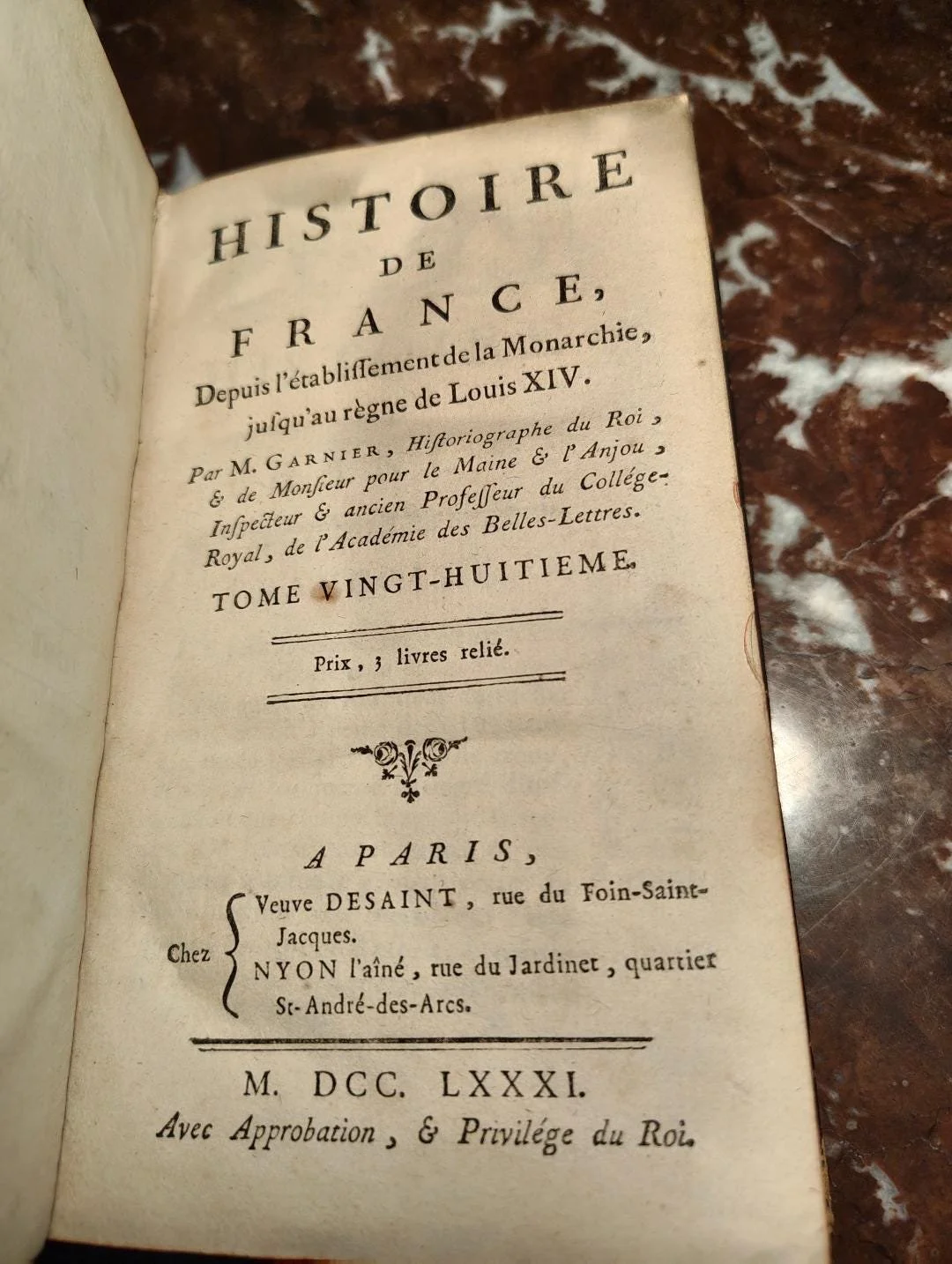 Image 1 of 10
Image 1 of 10

 Image 2 of 10
Image 2 of 10

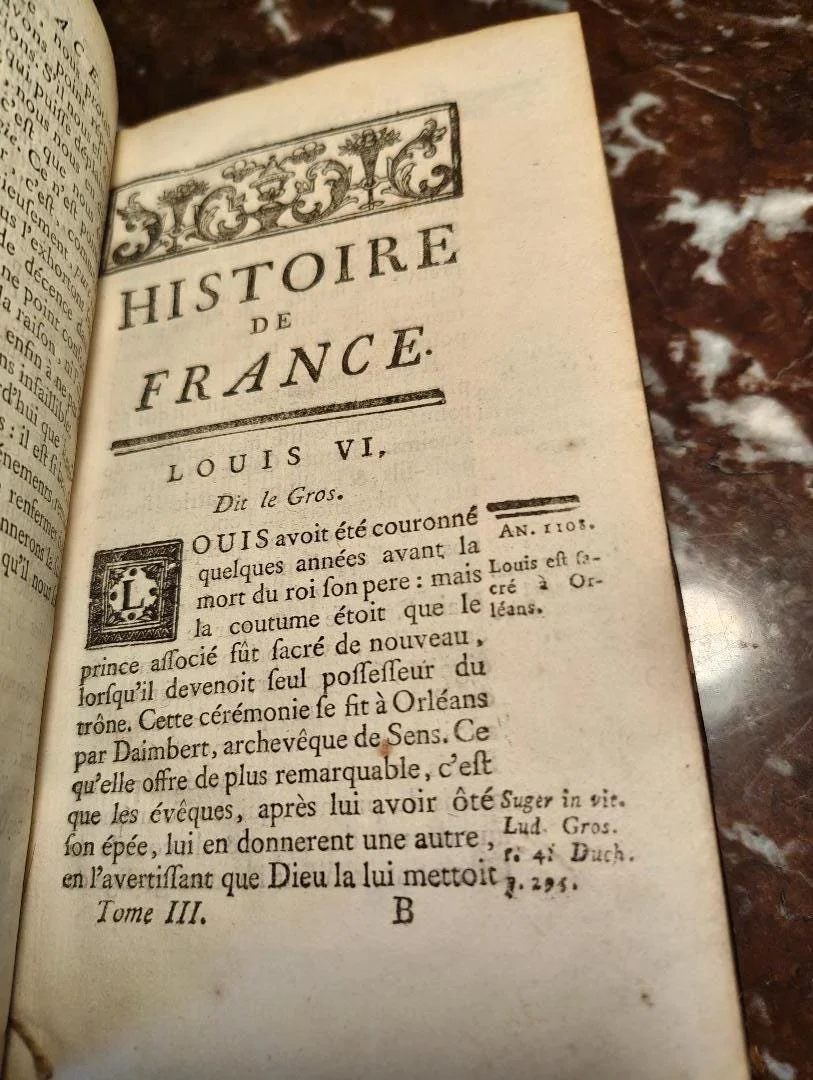 Image 3 of 10
Image 3 of 10

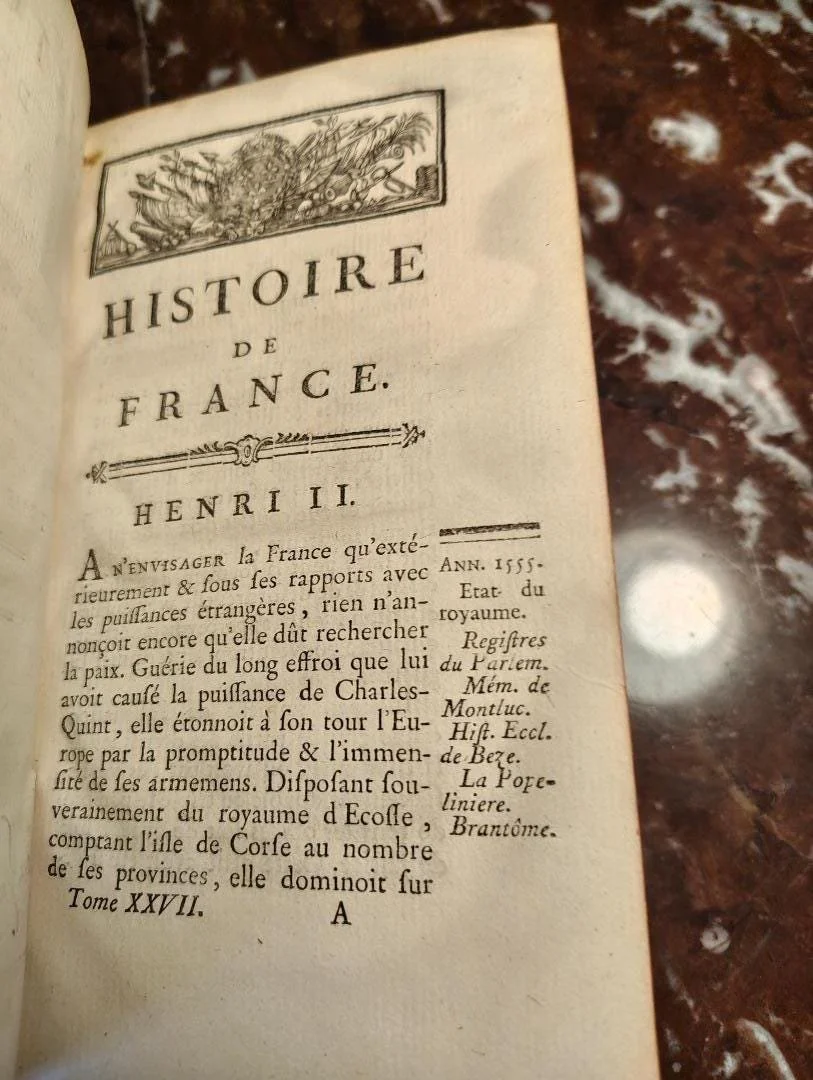 Image 4 of 10
Image 4 of 10

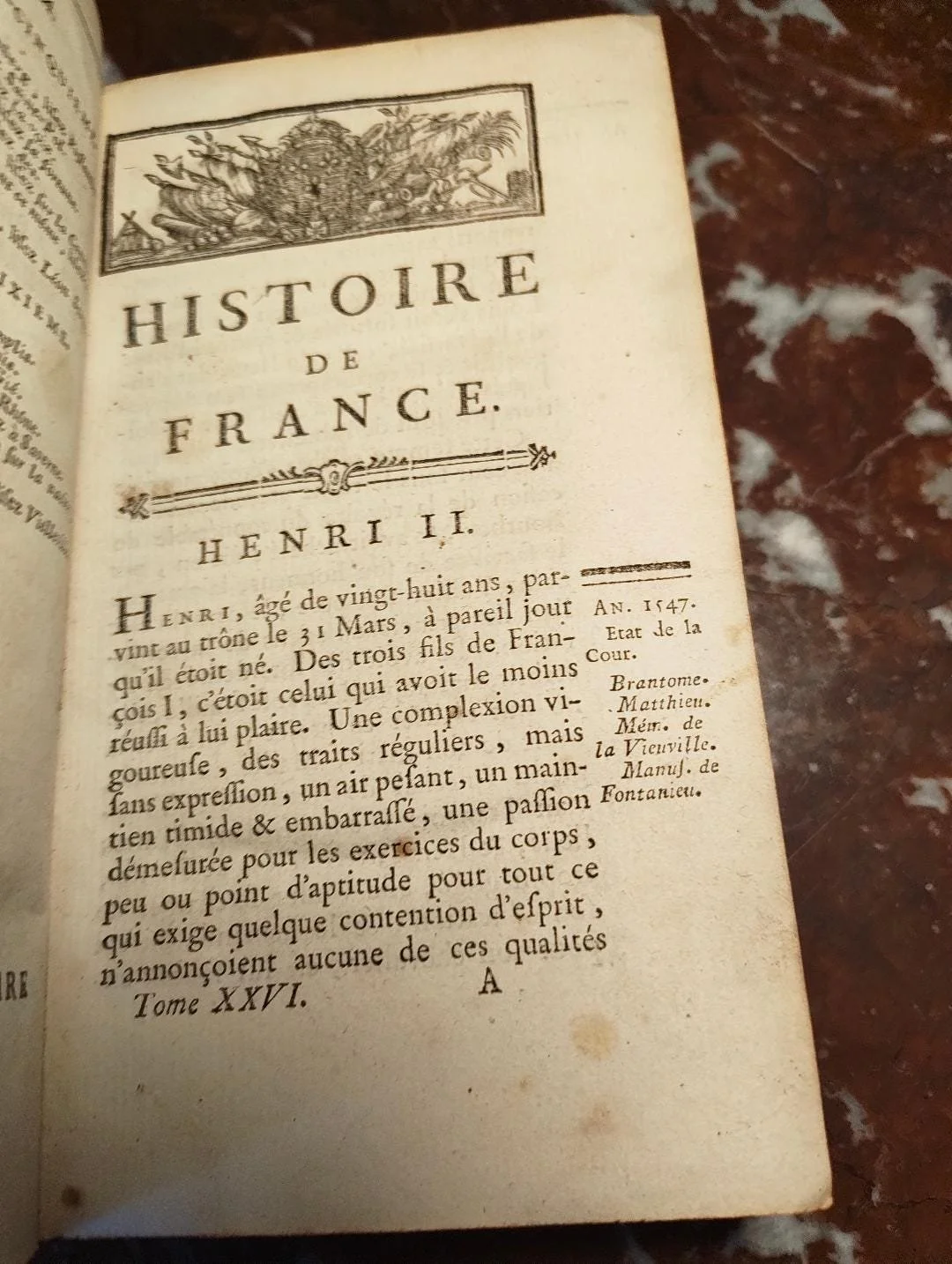 Image 5 of 10
Image 5 of 10

 Image 6 of 10
Image 6 of 10

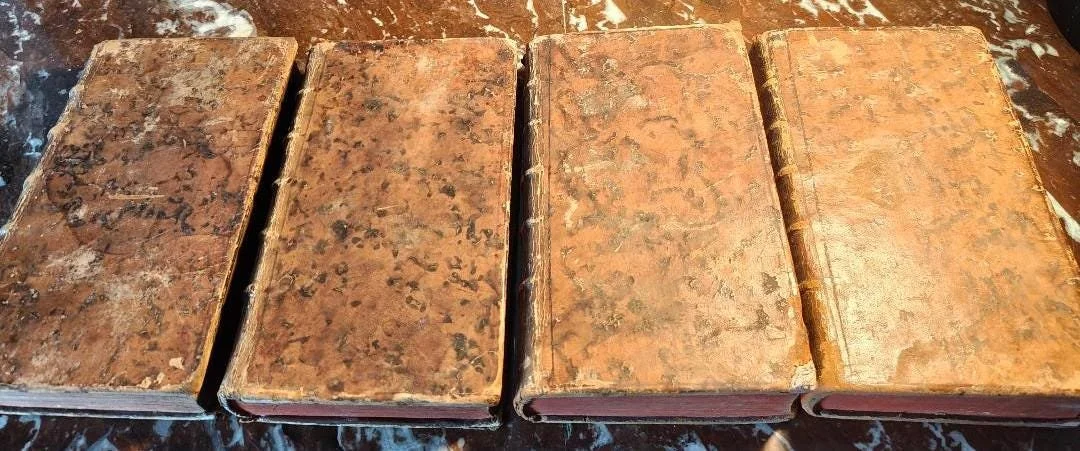 Image 7 of 10
Image 7 of 10

 Image 8 of 10
Image 8 of 10

 Image 9 of 10
Image 9 of 10

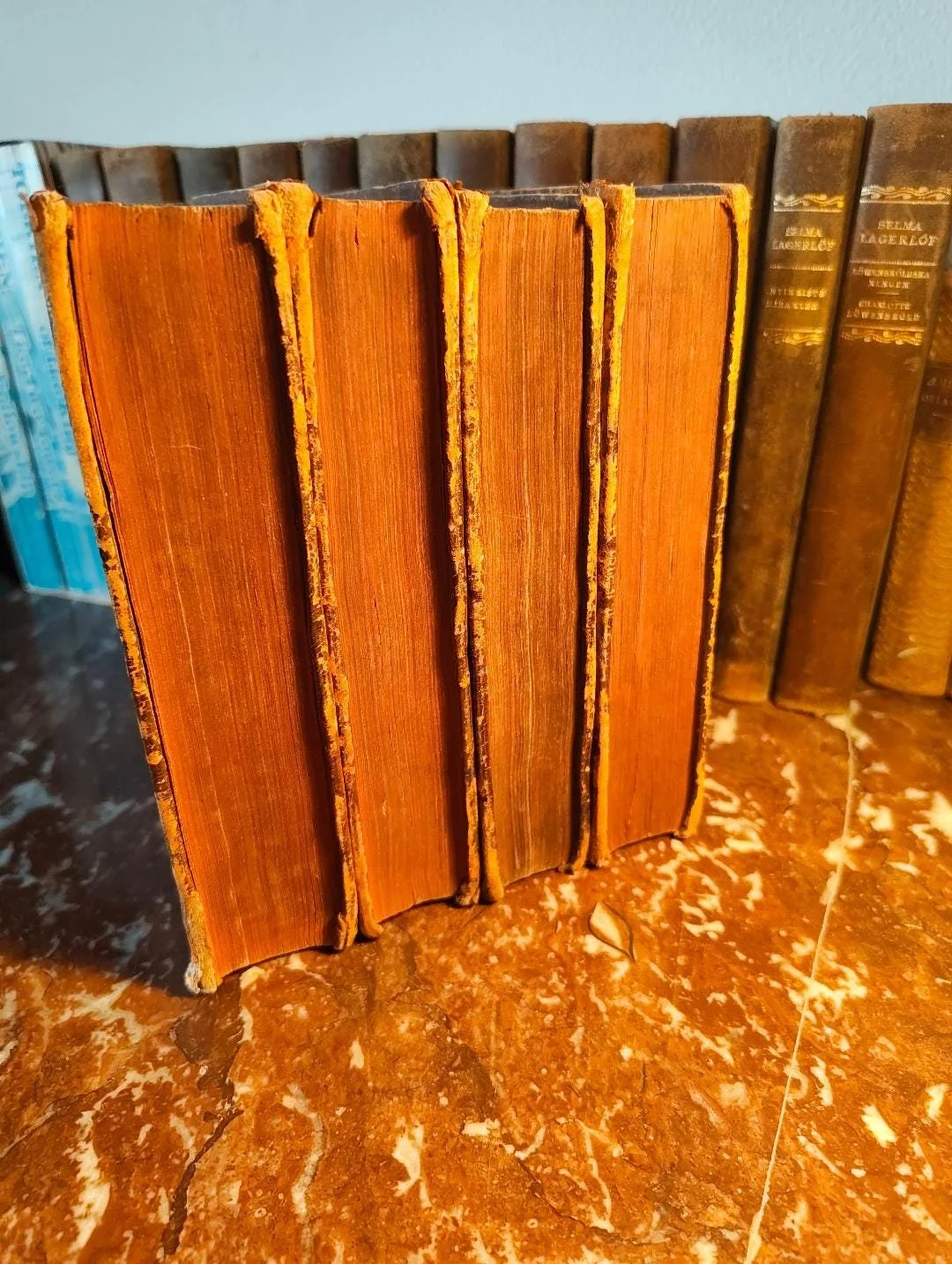 Image 10 of 10
Image 10 of 10











M. Garnier. Histoire de France. Paris, 1781. Four Volumes in Contemporary Full Leather
Royal, political, and military history of France, printed during the final years of the Enlightenment
This 1781 Paris printing of M. Garnier’s Histoire de France, depuis l’établissement de la Monarchie jusqu’au règne de Louis XIV offers a compelling cross section of one of the great historical enterprises of the eighteenth century. Garnier, historiographer to the king, contributed to a monumental multi volume project that sought to narrate the full arc of French history from its earliest foundations to the age of Louis XIV. These four surviving tomes carry the reader across a broad chronological span of medieval and early modern France.
The set includes:
Tome III, devoted to the reign of Louis VI, known as Louis the Fat
Tome XXVI, covering the reign of Henri II
Tome XXVII, a continuation of Henri II
Tome XXVIII, devoted to François II
Although not consecutive, these volumes illustrate the structure of Enlightenment historiography, which combined royal biography, political narrative, ecclesiastical tensions, and military history into a unified vision of national development. Through Garnier’s prose the reader encounters both the consolidation of medieval monarchy and the turbulence of sixteenth century France.
Each volume is bound in contemporary full leather with gilt tooled spines and red sprinkled edges. Decorative headpieces and engraved vignettes appear throughout, reflecting the high standards of Parisian printing in the decades before the Revolution. The bindings show significant wear, including rubbed boards and cracked spines, yet retain the unmistakable presence of eighteenth century craftsmanship. The interiors remain generally clean and legible with the strong impression typical of the period’s presses.
As a historical artefact the set occupies a meaningful place within Enlightenment historiography. It reflects the drive to systematise national history, the intellectual authority of royal historiographers, and the material culture of French bookmaking under the ancien régime. Partial sets of such large historical series are not unusual today, and each surviving group of volumes offers its own narrative and bibliographical value.
For collectors of French history, scholars interested in eighteenth century interpretations of monarchy, or bibliophiles seeking authentic period bindings, this ensemble provides an evocative and substantial example.
Royal, political, and military history of France, printed during the final years of the Enlightenment
This 1781 Paris printing of M. Garnier’s Histoire de France, depuis l’établissement de la Monarchie jusqu’au règne de Louis XIV offers a compelling cross section of one of the great historical enterprises of the eighteenth century. Garnier, historiographer to the king, contributed to a monumental multi volume project that sought to narrate the full arc of French history from its earliest foundations to the age of Louis XIV. These four surviving tomes carry the reader across a broad chronological span of medieval and early modern France.
The set includes:
Tome III, devoted to the reign of Louis VI, known as Louis the Fat
Tome XXVI, covering the reign of Henri II
Tome XXVII, a continuation of Henri II
Tome XXVIII, devoted to François II
Although not consecutive, these volumes illustrate the structure of Enlightenment historiography, which combined royal biography, political narrative, ecclesiastical tensions, and military history into a unified vision of national development. Through Garnier’s prose the reader encounters both the consolidation of medieval monarchy and the turbulence of sixteenth century France.
Each volume is bound in contemporary full leather with gilt tooled spines and red sprinkled edges. Decorative headpieces and engraved vignettes appear throughout, reflecting the high standards of Parisian printing in the decades before the Revolution. The bindings show significant wear, including rubbed boards and cracked spines, yet retain the unmistakable presence of eighteenth century craftsmanship. The interiors remain generally clean and legible with the strong impression typical of the period’s presses.
As a historical artefact the set occupies a meaningful place within Enlightenment historiography. It reflects the drive to systematise national history, the intellectual authority of royal historiographers, and the material culture of French bookmaking under the ancien régime. Partial sets of such large historical series are not unusual today, and each surviving group of volumes offers its own narrative and bibliographical value.
For collectors of French history, scholars interested in eighteenth century interpretations of monarchy, or bibliophiles seeking authentic period bindings, this ensemble provides an evocative and substantial example.

